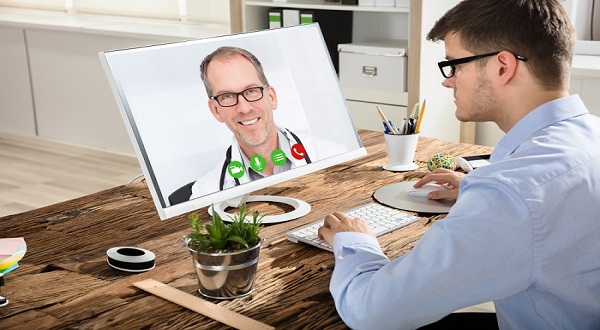Educational Adaptations: eLearning as a Tool for Medical Educators

As technology changes and advances, education too adapts to and adopts new innovations. The traditional mode of learning, solely in brick-and-mortar classrooms, is a thing of the past, especially considering the current global pandemic. Consumer behavior (in this case, that of students) has shifted online, so it makes sense that many expect for information and education to be at their fingertips.
Exponential increases in the amount of knowledge medical students must master are generated by advancements in medical technology and medicine itself. Back in 2005, Hilz and Turoff wrote that “Online learning is a new social process that is beginning to act as a complete substitute for both distance learning and the traditional face-to-face class” and that it would “radically change the nature of what is thought of as the typical college course.” Fifteen years later, this could not be more true. A meta-analysis of student learning success via the flipped classroom approach found that, in health professions education, there was a significant improvement in student learning as compared to traditional teaching methods.
There are many ways in which educational institutions are working to meet this demand – from offering distance learning courses, to implementing blended learning methods, med schools world-wide are stepping up. Utilizing online medical education tools actually allows for educators to provide and students to take advantage of different types of learning techniques, a few of which are detailed here:
The “flipped classroom” approach
As mentioned above, perhaps one of the most obvious advantages of an online learning platform is that students can have access to the learning material in advance, and thus come to class prepared with questions and for discussions. The “flipped classroom” approach takes this idea and builds the class structure around it: students prepare, using video lectures, reading articles, and/or answering quiz questions, and come to class ready to ask questions and dive deeper into the topic. This allows students to learn at their own pace and allows educators to proactively address any gaps in knowledge as the material is being disseminated.
Problem-based learning
This method relies on approaching learning via solving a problem, similar to how students can use a Qbank to reverse-engineer their studies via reverse learning. In problem-based learning (PBL), a question or problem is posed at the beginning of a class or a semester. Students then learn different techniques or concepts that they will need to solve/correctly answer the question. For medical students, this may remind them of the patient-centered vignettes that they will face on the USMLE Step 1, Step 2 CK, and Step 3 exams. In starting with the question, students know what they are working toward learning, and educators can thus structure their lecture to help students reach and understand the correct answer.
Simulation
Medical simulations allow students to get hands-on practice and to improve their clinical skills this way. Knowing how to interact with and examine patients is an essential part of medical education – the USMLE Step 2 CS exam is a series of patient encounters. While this is of course a skill that will be practiced time and time again on real people, some online platforms also offer students a chance to interact with virtual patients and to enhance their competence this way. This is a safe environment for learning and for making mistakes – inevitable at the beginning stages of learning – as actual patients are not put at risk.
Self-directed learning
This method of learning is ideally suited to eLearning platforms. With self-directed learning, students actively determine what they still need to learn or the information that they need to review, make a plan, and get started. On the surface, this is just what studying is; however, this methodology goes a bit deeper. In some disciplines, self-directed learning is fostered via the promotion of Design Thinking. In medical education, being able to self direct his or her own learning is essential. As technology changes, future medical professionals will need to adapt and learn to think critically; self-directed learning helps train this while they’re still students.
These are just a few examples of teaching and learning techniques that online learning platforms lend themselves to; there are many more. Utilizing a mix of these methods is also a way for medical educators to enhance their students’ educational experiences, resulting in well- rounded and well-prepared medical students preparing to enter the workforce. Traditional classroom learning is a thing of the past – the future of medical education is here, and it’s digital.

